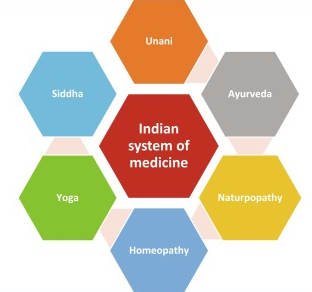

18th August 2023 (7 Topics)
Context
Recently, WHO director-general Tedros Adhanom Ghebreyesus attends the Global Conference on Traditional Medicine as part of the G-20’s Health Ministers’ meeting in Gandhinagar, Gujarat.
- He urged countries around the world to work towards unlocking the power of traditional medicine and provide evidence and action-based suggestions that can be interpreted into a global strategy.
About the event:
- It was WHO’s first global summit on traditional medicine.
- As part of the meet, India’s Health minister launched the Advantage Healthcare India Portal, for an upcoming exhibition and conference on medical value travel.
- India emphasized that medical value travel would enable greater knowledge-sharing, sustainable partnerships and increased synergies, contributing to building stronger global health architecture.
- By leveraging medical value travel, countries could offer specialised resources and services that may not be available, affordable, or accessible in other parts of the world.
What is Traditional Medicine?
- According to the WHO, traditional medicine is the total sum of the “knowledge, skills and practises indigenous and different cultures have used over time to maintain health and prevent, diagnose and treat physical and mental illness”.
- Its reach encompasses ancient practices such as acupuncture, ayurvedic medicine and herbal mixtures as well as modern medicines.
Role of India in Traditional Medicines:
- In India, it is often defined as including practices and therapies — such as yoga, Ayurveda, Siddha.
- These therapies and practices have been part of Indian tradition historically as well as others — such as homoeopathy — that became part of Indian tradition over the years.
- Ayurveda and yoga are practised widely across the country.
- The Siddha system is followed predominantly in Tamil Nadu and Kerala

|
The Sowa-Rigpa system is practised mainly in Leh-Ladakh and Himalayan regions such as Sikkim, Arunachal Pradesh, Darjeeling, Lahaul & Spiti. |
WHO’s strategy for Traditional medicines:
- Integrating with Technological Advancements: The Centre aims to channel the potential of traditional medicine, by integrating it with technological advancements and evidence-based research.
- Set Policies and Standards: It will seek to set policies and standards on traditional medicine products and help countries create a comprehensive, safe, and high-quality health system.
- Support Efforts to Implement WHO Strategy:
- It will support efforts to implement the WHO’s Traditional Medicine Strategy (2014-23).
- It aims to support nations in developing policies & action plans to strengthen the role of traditional medicine in pursuing the goal of universal health coverage.
- According to WHO estimates, 80% of the world’s population uses traditional medicine.
Initiatives by India:
- India has committed an estimated USD 250 million to support the GCTM’s establishment, infrastructure and operations.
- Focus on four main strategic areas:
- Evidence and learning
- Data and analytics
- Sustainability and equity and
- Innovation and technology to optimise the contribution of traditional medicine to global health.
More Articles



